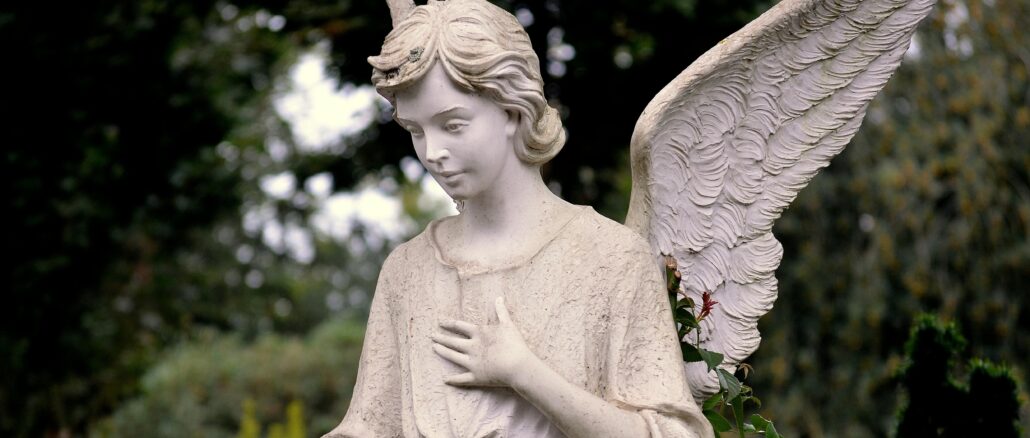
Discover the Timeless Beauty of the Angel Statue Bocholt Germany: A Grayscale Masterpiece of Art and Heritage
Introduction: Bocholt’s Historical and Cultural Significance
Bocholt, a picturesque town in North Rhine-Westphalia (NRW), Germany, has a rich history dating back to the 9th century. Strategically located near the Dutch border, Bocholt became a vital hub during the Industrial Revolution, particularly in textiles and manufacturing. The town’s historical trajectory is reflected in its striking architecture, including the Gothic Revival St. George’s Church and the historically significant Town Hall.
Amidst this heritage, the Angel Statue in Bocholt stands as a symbol of cultural pride, artistic finesse, and spiritual resonance. Visitors and locals alike are drawn to its presence, which represents both the town’s artistic heritage and its historical narrative.
The Angel Statue: A Symbol of Bocholt’s Heritage
Crafted in the early 20th century by the renowned artist Franz von Stuck, the Angel Statue in Bocholt embodies the elegance of neoclassicism with a modern sensibility. Its flowing garments and serene expression convey grace, protection, and guidance, reflecting the community’s aspirations for peace and hope.
Placed prominently on a pedestal, the statue is not only an artistic masterpiece but also a cultural emblem, representing Bocholt’s resilience and spiritual identity across generations. It continues to captivate visitors, offering a moment of reflection and connection to the town’s historical roots.
Visiting Bocholt: Best Times and Tips
The ideal time to visit Bocholt is spring (April–June) or early autumn (September–October), when weather conditions are mild and perfect for sightseeing. The town is well-connected by train and bus services from nearby cities like Duisburg and Münster.
Once in Bocholt, visitors can explore the statue on foot or by bicycle, immersing themselves in the town’s historic streets and scenic parks. The park surrounding the Angel Statue provides an excellent vantage point for photography, while adjacent pathways offer unique angles to capture the statue’s grandeur.
Nearby attractions include:
Historic city center: Perfect for walking tours and architectural exploration.
Stadtmuseum Bocholt: Offers insights into the town’s rich cultural history.
Bocholter Aa river banks: Ideal for nature walks and serene relaxation.
Symbolism of Angels in Art and Culture
Angels are universal symbols of protection, guidance, and divine communication. In the Judeo-Christian tradition, they act as messengers of God, bridging the human and spiritual realms. Across cultures, angels embody guardianship and hope—seen in Ancient Egyptian funerary practices or Islamic interpretations as divine emissaries.
In art, angels have evolved from the intricate depictions of the Renaissance to abstract modern representations, reflecting changing cultural values. The Angel Statue in Bocholt encapsulates this rich tradition, blending classical elegance with spiritual depth, inviting viewers to reflect on universal themes of resilience, guidance, and human connection to the divine.
Best Locations for Capturing the Angel Statue
Photographers can enhance their shots by considering:
Surrounding park areas: Use natural backdrops to highlight the statue’s intricate features.
Pathways and walkways: Utilize leading lines for dynamic composition.
Lighting conditions: Early morning or late afternoon light emphasizes grayscale contrasts.
Depth of field: Shallow depth isolates the statue, while wide shots capture its full presence.
Experimenting with angles, framing, and distance can produce a compelling visual narrative, reflecting the statue’s graceful poise and spiritual essence.
Community Engagement and Cultural Events
The Angel Statue is a cultural focal point in Bocholt, hosting events that strengthen community ties. Highlights include:
Bocholt Cultural Festival: Features music, art, and local crafts near the statue.
Art exhibitions: Local artists display works around the statue, fostering creativity and pride.
Public gatherings: Community picnics, remembrance ceremonies, and celebrations bring residents together.
These events transform the statue from a mere art object into a living symbol of community heritage, bridging history with contemporary cultural life.
Local Cuisine and Accommodation Near the Angel Statue
Visitors can enjoy traditional German cuisine at places like Altdeutsche Restaurant, serving dishes such as Sauerbraten and Rinderroulade. For Italian flavors, Pizzeria Da Marco is a popular choice.
Accommodation options include:
Hotel am Stadtpark: Modern amenities close to the statue.
City Hotel Bocholt: Convenient location with comfortable lodging.
Pairing sightseeing with culinary experiences and comfortable stays ensures a memorable visit to Bocholt and the Angel Statue.
Reflections and Personal Experiences
Locals and tourists often describe the statue as a source of inspiration and solace. Visitors report feeling comforted and reflective when engaging with its serene presence. The statue also serves as a backdrop for personal milestones, photography, and community gatherings, enhancing its significance as both an artistic and spiritual landmark.
Conclusion: The Enduring Legacy of the Angel Statue in Bocholt
The Angel Statue in Bocholt, NRW, Germany, stands as a testament to artistic brilliance, spiritual symbolism, and community heritage. Its grayscale elegance, captured through photography, invites reflection on resilience, guidance, and cultural identity. Whether admired as a historical artifact, photographed in natural light, or experienced during local events, the statue remains a timeless emblem of Bocholt’s past, present, and future.

